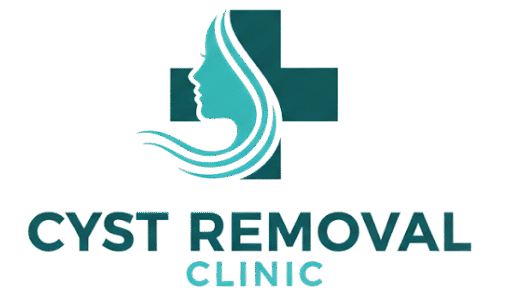Cysts are usually harmless, but if bacteria get inside, they can quickly become red, swollen, and painful. When this happens, the cyst is classed as infected — and treatment must be handled differently.
At Cyst Removal Clinic London, our doctors regularly treat infected cysts, ensuring the infection clears safely before full removal. Understanding how infection changes your treatment plan can help you heal faster and prevent complications.
How a cyst becomes infected
A cyst forms when a blocked pore or hair follicle traps oil, keratin, or dead skin cells under the skin. Normally, the cyst remains sealed and painless.
An infection begins when bacteria enter the cyst wall, often through:
- A small break in the skin
- Shaving or friction from clothing
- Attempting to squeeze or pop the cyst
- Pre-existing inflammation or trauma
Once bacteria multiply inside, the cyst fills with pus and pressure builds up — turning it into a painful, inflamed lump.
Signs that your cyst is infected
An infected cyst often looks and feels very different from a normal one. Common symptoms include:
- Redness and swelling around the lump
- Pain or tenderness that worsens over time
- Warmth in the surrounding skin
- Yellow or white discharge (pus)
- Foul-smelling fluid if the cyst bursts
- Fever or general unwellness in more severe cases
If the area is extremely sore, hot, or starts leaking fluid, it’s important to see a doctor promptly.
Why infected cysts are treated differently
When a cyst is infected, surgical removal is usually postponed. Removing the cyst while it’s inflamed can:
- Increase the risk of spreading bacteria
- Make it harder to remove the wall intact (which can cause recurrence)
- Delay wound healing
Instead, the infection must first be controlled — usually with antibiotics or drainage — before complete removal can be performed later in a calm, clean environment.
Step-by-step management of an infected cyst
1. Medical assessment
Your doctor will examine the lump to confirm infection and check for abscess formation (a pocket of pus).
2. Antibiotic treatment
For mild infections, a short course of oral antibiotics may be prescribed to reduce swelling and kill bacteria. This is often enough to calm the cyst so it can later be removed safely.
3. Incision and drainage
If the cyst is large, painful, or filled with pus, your doctor may perform a quick drainage procedure.
- The area is numbed with local anaesthetic.
- A small incision is made to release fluid and relieve pressure.
- The wound is cleaned and dressed to drain naturally for a few days.
You’ll usually feel immediate relief after drainage.
4. Healing period
The infection site is allowed to heal for one to two weeks. During this time, the inflammation settles and the tissue becomes stable again.
5. Complete surgical excision
Once the area is calm and free from infection, the doctor can safely remove the entire cyst capsule in one session — preventing it from coming back.
This two-step approach is the safest and most effective way to treat an infected cyst permanently.
What you should avoid doing
If you suspect your cyst is infected, avoid the temptation to handle it yourself.
You should not:
- Squeeze, pop, or pierce the cyst
- Apply undiluted antiseptics or harsh creams
- Use home “boil removal” remedies
- Ignore symptoms of spreading infection (fever, warmth, rapid swelling)
These can worsen the infection, drive bacteria deeper into the skin, and increase scarring.
How to care for an infected cyst at home (before treatment)
While waiting to see your doctor, you can:
- Keep the area clean and dry.
- Apply a warm compress for 10–15 minutes, two to three times a day to help drainage and reduce discomfort.
- Avoid tight clothing or friction on the area.
- Take mild pain relief such as paracetamol or ibuprofen.
If the pain worsens or you develop fever or spreading redness, contact your clinic or GP urgently.
After drainage or antibiotics
Once the infection has cleared, the cyst may shrink or seem to disappear temporarily — but the underlying capsule remains. This means the cyst can refill again later.
To prevent recurrence, full surgical excision is recommended after healing. This removes the sac completely and ensures the cyst does not return.
At Cyst Removal Clinic, we usually schedule this follow-up within 2–3 weeks of the infection settling.
What if the cyst bursts on its own?
Sometimes an infected cyst ruptures spontaneously, releasing pus and fluid. This often brings short-term relief but doesn’t cure the problem — because the cyst wall is still inside the skin.
You should:
- Gently clean the area with mild soap and water
- Apply a sterile dressing
- Avoid squeezing out the remaining material
- Contact your doctor to assess and plan proper removal
Attempting to empty the cyst yourself can push infection deeper or cause scarring.
When to seek urgent help
You should seek immediate medical review if you notice:
- Rapidly spreading redness or swelling
- Severe pain not relieved by over-the-counter medication
- Fever, chills, or feeling unwell
- Red streaks extending from the cyst (possible cellulitis)
These signs may indicate a spreading infection requiring prompt medical attention.

